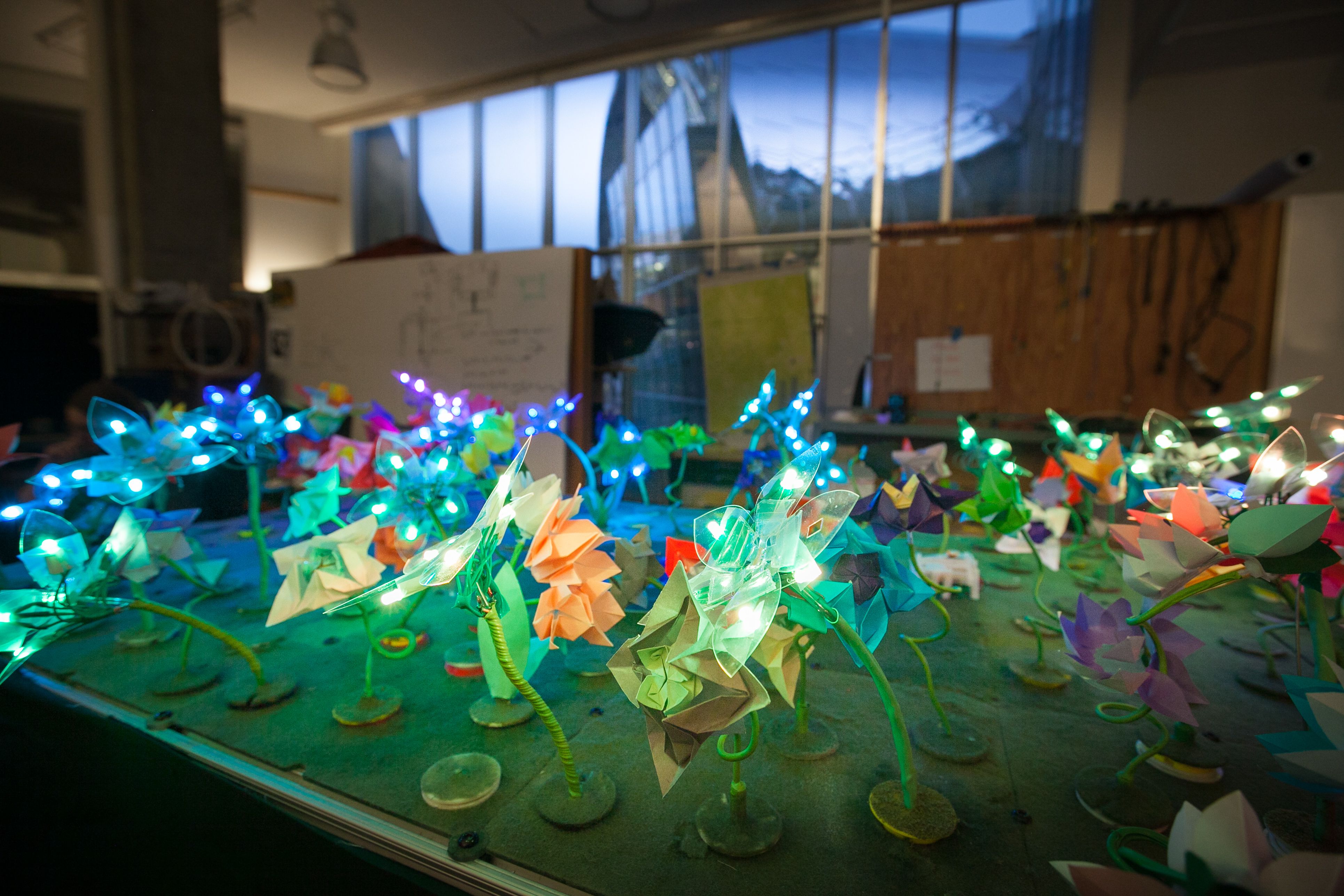Review: MIT’s Robot Garden – A Fun and Educational Tool for Kids
Introduction
MIT’s Computer Science and Artificial Intelligence Lab (CSAIL) and the Department of Mechanical Engineering have developed a unique and innovative system called the “robot garden” that aims to get kids excited about programming. This system features LED lights, origami robots, and various robotic creatures that can be controlled via a tablet or Bluetooth-enabled device. In this review, we will explore the features and benefits of this system and how it can be used to engage young students in the world of programming.
Features of the Robot Garden
The robot garden consists of 16 tiles, each connected via Arduino microcontrollers, and programmed with search algorithms that explore the space in different ways. The system includes over 100 distinct robots, including origami flowers, sheep robots, and magnet-powered ducks. These robots can be controlled via a tablet using a simple “control by click” feature or a more advanced “control by code” feature where users can add their own commands and execute sequences in real-time.
Educational Benefits
One of the main goals of the robot garden is to introduce students to concepts in algorithms and programming in a fun and engaging way. By allowing students to see their commands running in a physical environment, the system helps to bridge the gap between coding efforts and real-world applications. The system also tests distributed algorithms and encourages students to explore topics like graph theory and networking.
Origami Robots and Creatures
The robot garden features a variety of origami robots and creatures, including flowers, sheep, and ducks. These robots are created using traditional print-and-fold origami techniques and printable motors that allow them to move and interact in unique ways. The system also includes LED lights that can change colors and create visually appealing displays.
Future Developments
In the future, the researchers behind the robot garden hope to make the system operable by multiple devices simultaneously and experiment with interactive auditory components. They also plan to incorporate the system into programming curriculums for middle and high schools, as well as develop printable robots for educational use. The ultimate goal is to expose more kids to the real-world applications of computer science and programming from an early age.
Conclusion
The robot garden developed by MIT’s CSAIL and Department of Mechanical Engineering is a fun and educational tool that introduces students to the world of programming in a creative and engaging way. With its unique combination of LED lights, origami robots, and interactive features, the system has the potential to inspire a new generation of young programmers and computer scientists. As technology continues to advance, tools like the robot garden will play a crucial role in shaping the future of STEM education.

